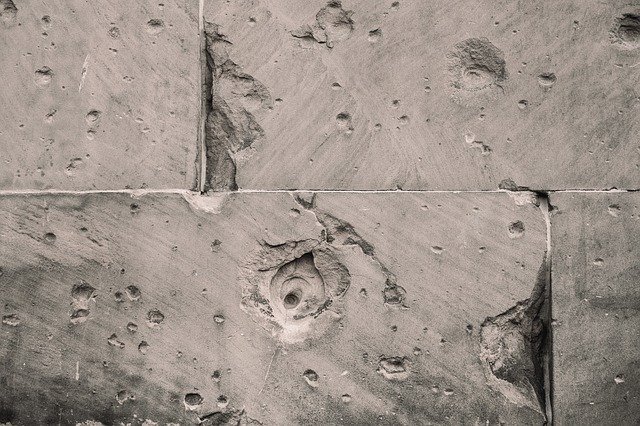This piece has been extracted from “Home repair and improvement Creative Homeowner, Upper saddle River, New Jersey”. Drywall basics is a panel made of calcium sulfate, di-hydrate (gypsum), with or without additives, typically extruded between thick sheets of facer and backer paper, used in the construction of interior walls and ceilings. “Drywall repair Washington DC“, helps you to avail these services.
Drywall Basics
The standard drywall panel for new construction and remodeling is ½ inch thick. Special ½-or 5/8- inch-thick ceiling panels are recommended for ceilings. Especially those with 24-inch-on-center framing. Lighter 3/8-inch panels are good for resurfacing work. When a plaster wall is beyond repair. You can nail the thin drywall right over it. Special ¼-inch panels are used for curved surfaces.

Drywall is generally available in 4-foot widths and 8-, 10-, 12-, and 14-foot lengths. It may seem easiest to hang 4 x 8 sheets vertically, running the long dimension from floor to ceiling. And it’s true the 4 x 8 sheet, which weighs about 60-70 pounds, is easier to maneuver and install than longer sheets—especially on ceilings. But whenever possible, you should install sheets horizontally on walls, and always choose the longest practical length to minimize the number of end joints. You’ll need a helper, but horizontal installation saves work during the time-consuming process of taping and finishing joints. Also vertical joints are harder to tape—you have to stoop to do the lower section and stretch to get the top. The long horizontal seam is easy to reach.
When you handle drywall during installation, remember to treat it gently because it breaks easily if dropped or hit, and you will crush a corner if you put the full weight of a sheet on it. Stack drywall flat to prevent warping if you don’t plan on using it right away.
You may need a lot more than nails, screws, tape, corner bead, and joint compound to drywall. In addition to the specialized tools above, you have a choice of gypsum materials. The residential range includes ¼-inch panels for resurfacing existing walls to 5/8-inch panels for heavy-duty applications. There are also special board treatments, for example, a fire-code board that makes sense in utility rooms, and a moisture-resistant board for kitchens and baths.
| Material | Quantity |
| Drywall Panels | For 4×8 panels: divide room perimeter by 4, deduct about 1/3 sheet for a door, and ¼ sheet for window |
| Joint Compound | About 1 gal. per 100 sq. ft. of drywall |
| Joint tape | About 400 ft. per 500 sq. ft. of drywall |
| Nails or screws | About 1 fastener per sq. ft. |
Finishing Drywall
Nailing up drywall doesn’t require much skill, but covering the seams to create a smooth, continuous surface does. Pros make finishing drywall look easier than it really is, but with a little practice, and by avoiding common mistakes, do-it-yourself can get good results, too.
Don’t take shortcuts or rush the job. Taping should be done in three stages. Trying to get by with two thick coats can cause the compound to take too long to dry, shrink excessively, crack, or droop. Failure to allow enough drying can have similar effects.
Gaps at the seams between sheets should never be wider than 1/8 inch. If you try to fill a larger gap, the joint will likely fail. Drywall is cheap—take down the poorly fit piece and install a new one correctly. And don’t use dehydrated joint compound or a mix that has been stored in freezing temperatures.
When smoothing out compound, the knife blade must ride smoothly on the drywall surface. When a knife nicks a nail-head or other imperfection, a ridge appears in the compound. So before applying the compound, go over the surface with a wide knife to locate any culprits. Give each nail a final, solid thump-don’t break the paper but do leave a dimple-and trim any small tears away with a utility knife.
Taping drywall joints
Knife blades must be clean when you start and throughout the process. One hardened speck on the blade will leave a distinctive groove, requiring extra spacing and sanding. Don’t allow debris or hardened specks to ruin the mix, and don’t dip a dirty knife in the bucket of compound-use a hawk or mud pan to hold a working supply. Scrape the compound off the b lade before each smoothing stroke.
Any dry spots under the tape are likely to bubble under successive coats. The key is to watch for a continuous and uniform color changes as you smooth the tape. Also avoid running the blade over a seam again and again. You will remove too much compound.
Imperfections not reduced by scraping or standing will cause problems in successive coats. But don’t over-sand , or you’ll scuff up the paper tape and drywall surface paper. That furry result persists through finishing and painting.
Drywall Repairs
Drywall is tough, but it can be torn, chipped, cracked, or even punctured accidentally, especially when moving furniture around. Large holes require more time and effort to fix, but you can make minor repairs quickly with only a few simple tools. For example, a deep scrape sometimes tears the surface paper on the wallboard. The first step is to remove any loose or frayed paper facing by neatly trimming the paper to a straight edge with a utility knife. Then fill in the shallow paperless section with compound.
Chronic cracks

Many house frames moves enough seasonally to disrupt drywall joints on a regular basis. If standard taping hasn’t held in the past, try an-other approach. Instead of using fiberglass mesh tape (popular with do-it- yourselfers because it is easier to apply) and conventional all-purpose joint compound, use paper reinforcing tape and setting-type joint compound (powder). Although it’s tricky to mix correctly and harder to work with because it dries so fast, you will get a harder and more durable bond, which reduces the chance of the crack reoccurring.
Start by removing any reinforcing tape and scraping out the crack. Fill the crack, and embed the tape with setting compound. Then, if you want, use ready-mix for the next two coats if cracks like these persist at the ceiling.
Continue reading on Checklist for your Contractor
